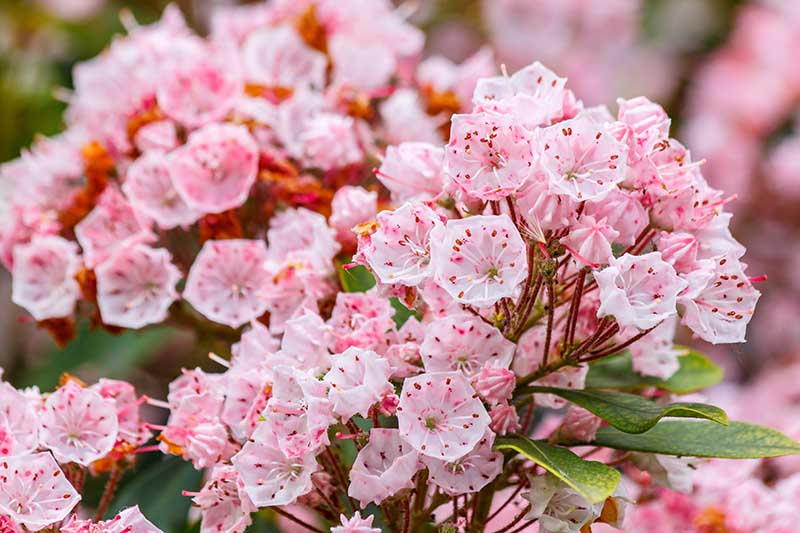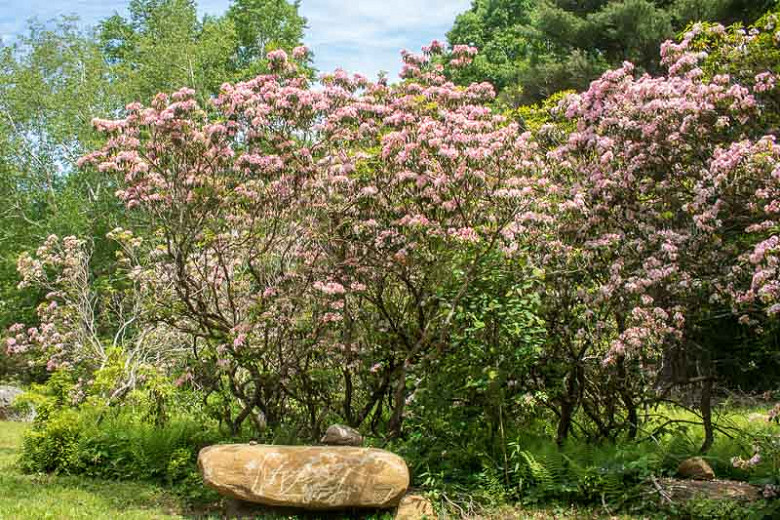How To Grow A Lush Blooming Mountain Laurel Bush In Your Garden
Mountain laurel is a beautiful and versatile shrub that can add a touch of elegance to any garden. With its glossy green leaves and clusters of showy flowers, mountain laurel is a sight to behold in the spring and summer.
If you're thinking about adding a mountain laurel bush to your garden, there are a few things you need to know to ensure its success. In this blog post, we'll discuss the ideal growing conditions for mountain laurel, how to plant and care for it, and how to prevent common problems.
Growing Conditions
Mountain laurel is native to the eastern United States, and it prefers cool, moist, well-drained soil with a pH of 5.0 to 5.5. It can tolerate full sun, but it does best in partial shade. If you live in a hot climate, you'll want to plant your mountain laurel in a spot that gets morning sun and afternoon shade.
Planting
The best time to plant mountain laurel is in the spring or fall. When planting, dig a hole that is twice as wide as the root ball and just as deep. Amend the soil with peat moss or other acidic compost. Place the root ball in the hole and backfill with soil, tamping it down gently. Water the plant thoroughly.
Care
Once your mountain laurel bush is established, it is relatively easy to care for. Water it regularly, especially during the first year. Mulch around the base of the bush to help retain moisture and suppress weeds. In the spring, fertilize the bush with a fertilizer specifically designed for acid-loving plants.
Pruning
Mountain laurel does not require a lot of pruning. However, you may want to remove any dead, diseased, or damaged branches in the spring. You can also prune the bush to shape it or to remove any branches that are growing too close to the house.
Problems
Mountain laurel is generally a hardy plant, but it is susceptible to a few problems, including:
- Leaf spot: This fungal disease can cause brown or black spots on the leaves. To prevent leaf spot, water the bush early in the morning so that the leaves have a chance to dry before nightfall.
- Scale: This insect pest can cause the leaves to yellow and drop off. To control scale, spray the bush with an insecticidal soap or neem oil.
- Deer: Deer love to eat mountain laurel, so if you live in an area with deer, you may need to protect your bush with a deer fence.
Conclusion
With proper care, mountain laurel can be a beautiful and long-lived addition to your garden. By following the tips in this blog post, you can help ensure that your mountain laurel bush thrives for many years to come.
For more information about mountain laurel, visit Garden Wiki. This website has a wealth of information about the plant, including its history, cultivation, and uses.
FAQ of mountain laurel bush
What is mountain laurel?
Mountain laurel is a deciduous shrub or small tree that is native to eastern North America. It is known for its beautiful pink or white flowers, which bloom in early summer. Mountain laurel is a popular ornamental plant, and it is also used in traditional medicine.
Where does mountain laurel grow best?
Mountain laurel grows in USDA Zones 5 to 9. It prefers moist, well-drained soil and partial to full shade. Mountain laurel can be grown in full sun, but it will need more water in that case.
How do I care for mountain laurel?
Mountain laurel is a relatively easy plant to care for. It needs regular watering, especially during the summer months. Mountain laurel should be fertilized once a year in the spring. It is also important to prune mountain laurel regularly to keep it healthy and attractive.
What are some common problems with mountain laurel?
The most common problems with mountain laurel are pests and diseases. Aphids, scale insects, and deer are some of the most common pests that attack mountain laurel. Anthracnose, leaf spot, and powdery mildew are some of the most common diseases that affect mountain laurel.
How can I propagate mountain laurel?
Mountain laurel can be propagated by seed, cuttings, or division. Seed propagation is the most common method. Seeds should be sown in the fall or early spring. Cuttings can be taken in the spring or summer. Division is the least common method of propagation, but it is the most successful.
What are some uses for mountain laurel?
Mountain laurel is a versatile plant that has many uses. It is a popular ornamental plant, and it is also used in traditional medicine. Mountain laurel leaves can be used to make a tea that is said to have medicinal properties. The bark of mountain laurel can be used to make a dye.
Image of mountain laurel bush
- Close-up of mountain laurel flowers. The flowers are a deep pink color and have a trumpet-like shape.
- A mountain laurel bush in full bloom. The bush is covered in flowers, which are arranged in clusters.

- A mountain laurel branch with leaves and flowers. The leaves are a dark green color and the flowers are a light pink color.
- A mountain laurel tree in the forest. The tree is surrounded by other trees and shrubs.
- A mountain laurel bush in a meadow. The bush is surrounded by wildflowers.

- A mountain laurel bush in a garden. The bush is planted next to a walkway.
- A mountain laurel bush in a vase. The flowers are arranged in a vase and are surrounded by greenery.
- A mountain laurel leaf. The leaf is a dark green color and has a serrated edge.
- A mountain laurel flower bud. The bud is a light pink color and is about to bloom.

- A mountain laurel seed pod. The seed pod is a brown color and is about the size of a pea.

Post a Comment for "How To Grow A Lush Blooming Mountain Laurel Bush In Your Garden"